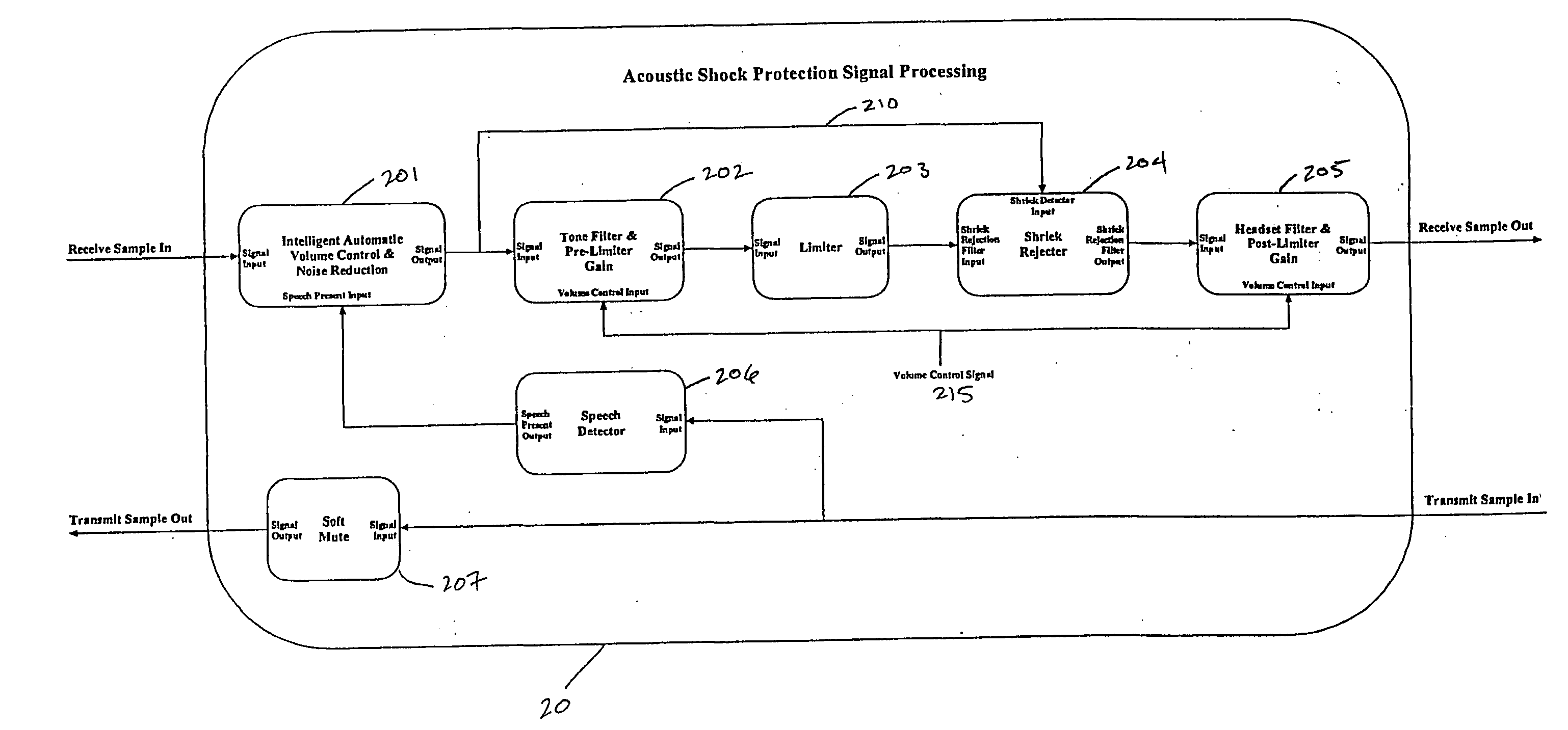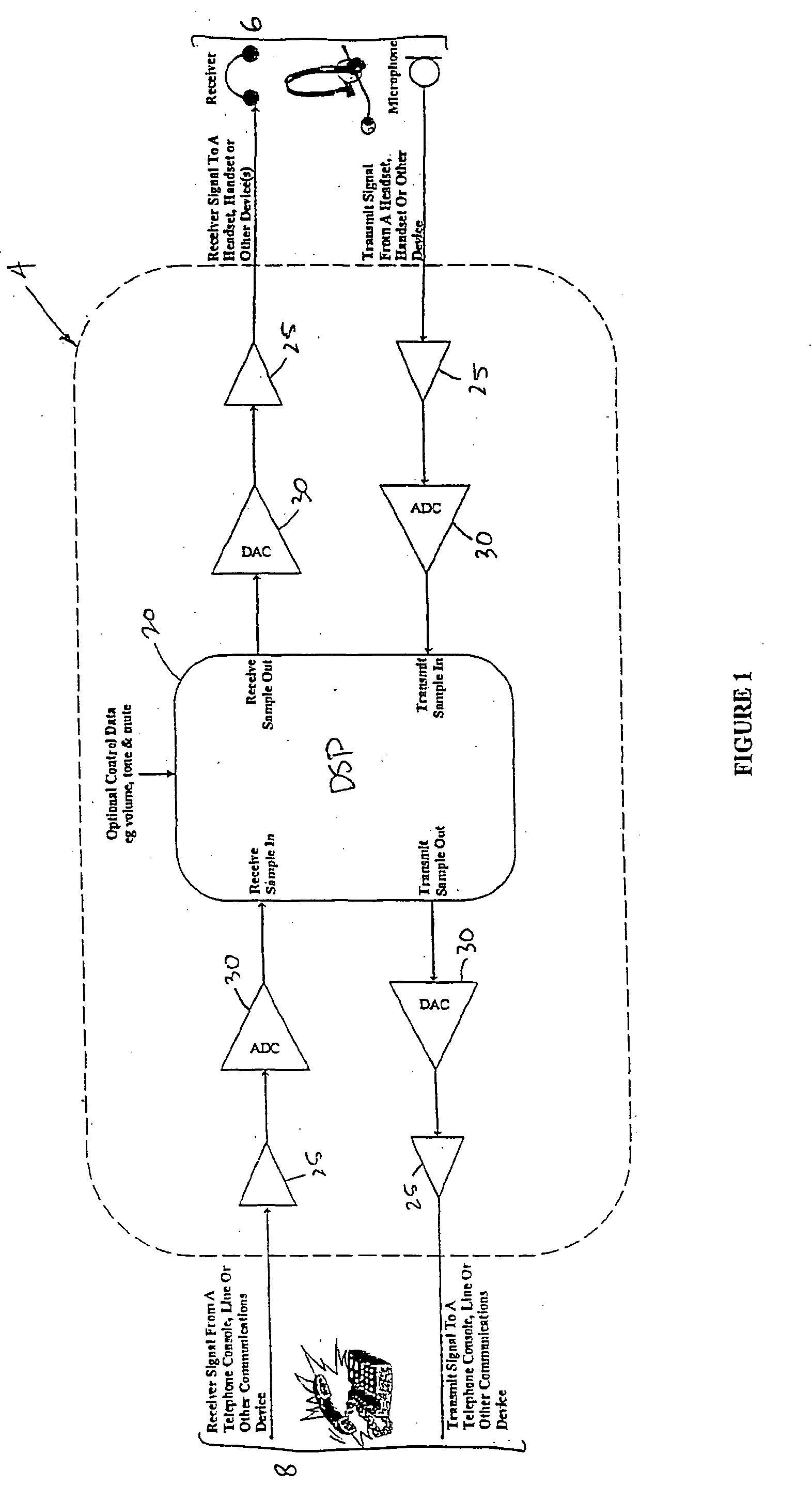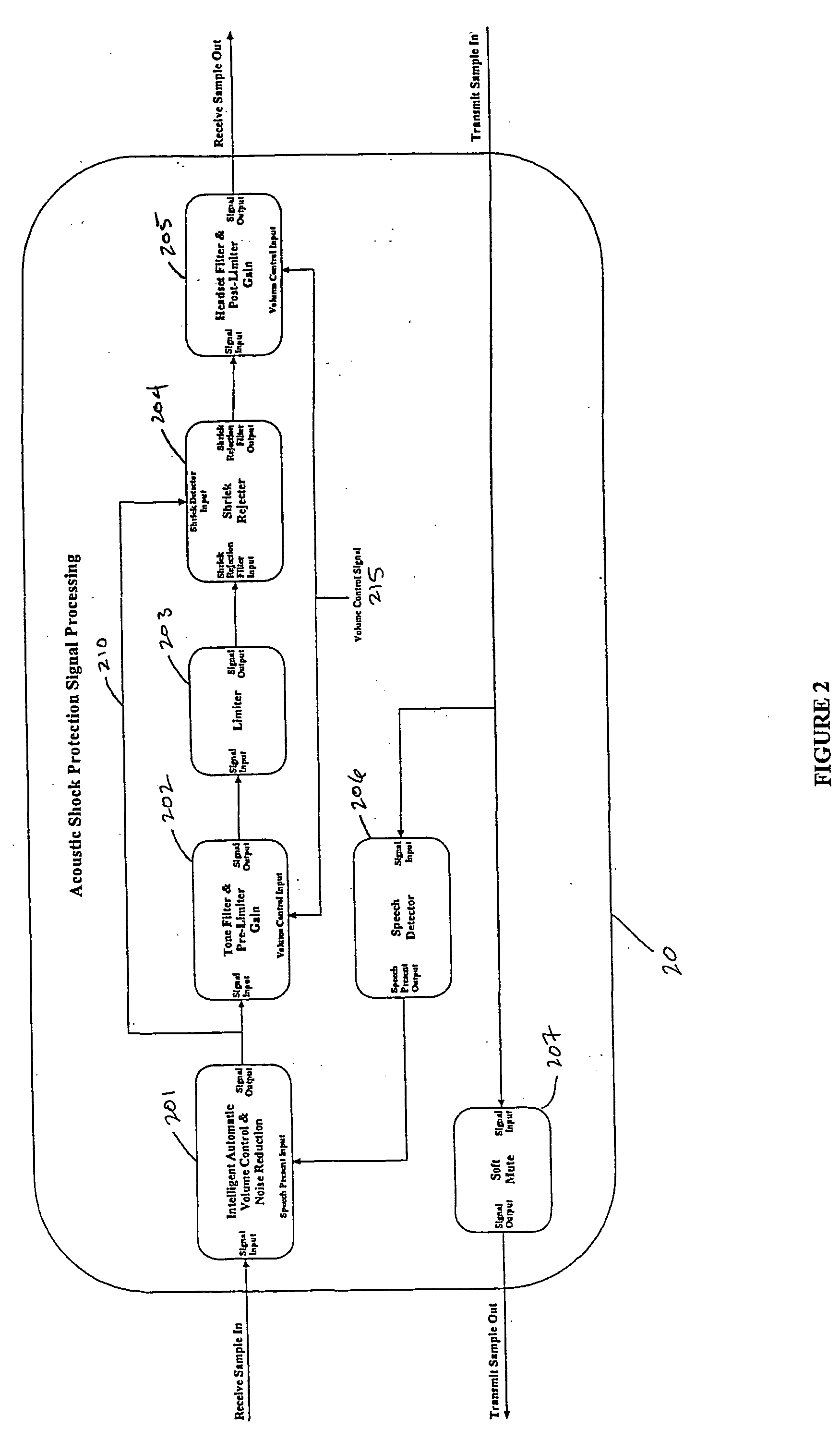Digital signal processing system and method for a telephony interface apparatus
a digital signal and interface technology, applied in the field of digital signal processing systems and methods for telephony interface apparatuses, can solve the problems of limiting the sound exposure to a fraction of a second, affecting the effectiveness of the device, and affecting the service of subscribers, so as to reduce the level of high-pitched narrow-band signals, the effect of reducing the risk of operators
- Summary
- Abstract
- Description
- Claims
- Application Information
AI Technical Summary
Benefits of technology
Problems solved by technology
Method used
Image
Examples
Embodiment Construction
With reference to FIG. 1, preferred embodiments of the invention relate to an interface device 4 for communicating with a headset 6 and telephony device 8. The interface device 4 is powered by a power supply 10 (not shown), which is either separate or alternatively derived from telephony device 8.
The interface device 4 receives incoming telephony signals from the telephony device 8 in analogue form, digitally processes (in DSP 20, the operation of which is described below) these signals after D / A conversion 30 and forwards the signals on to the headset 6 (after reconversion to analogue form). The interface device 4 acts as a sound shield and screens out unwanted audio signals from interface device 8 in favour of normal voice signals. The interface device 4 also receives voice signals back from the headset 6 and passes these through to the telephony device 8 without processing by the digital signal processor (described (later). However, if a mute function of the interface device 4...
PUM
 Login to View More
Login to View More Abstract
Description
Claims
Application Information
 Login to View More
Login to View More - R&D
- Intellectual Property
- Life Sciences
- Materials
- Tech Scout
- Unparalleled Data Quality
- Higher Quality Content
- 60% Fewer Hallucinations
Browse by: Latest US Patents, China's latest patents, Technical Efficacy Thesaurus, Application Domain, Technology Topic, Popular Technical Reports.
© 2025 PatSnap. All rights reserved.Legal|Privacy policy|Modern Slavery Act Transparency Statement|Sitemap|About US| Contact US: help@patsnap.com



